Many struggling with opioid addiction are asking themselves what it will take to kick their cravings. They’re looking for answers, and for some, those answers come in the form of medication-assisted treatment (MAT). The most common medication is Suboxone, a combination of buprenorphine and naloxone.
But what is Suboxone, and how does it work? Is it safe? How does it help?
These are all great questions, and our team of specialists has the answers.
Here’s what you need to know …
What is the opioid crisis?
It was during the late 1990s — right on the brink of the new millennium — that opioids became a national talking point. The demand for these supposed miracle pain relievers was high. So high, in fact, that healthcare providers handed out prescriptions for OxyContin and Vicodin at unprecedented rates. Considering the pharmaceutical industry’s assurances that the likelihood of patient addiction was incredibly low — non-existent even — the popularity of opioids is easy to understand.
But the cost was high. The increase in accessibility led to widespread misuse of prescription and non-prescription drugs, resulting in a decades-long crisis that changed how we help patients treat and manage their pain.
Today, one in four patients receiving opioids to manage pain from injury or otherwise struggles with opioid addiction. Opioid-involved overdoses rose from 21,088 in 2010 to 47,600 in 2017. Since then, we’ve seen a significant increase, with 68,630 overdose deaths through 2020.
This addiction is a chronic illness and should continually be managed and monitored, treated by trained physicians with extensive knowledge of the subject. Opioid treatment is different for each person, ranging from individual or group counseling, cognitive therapy, and — of course — medication-assisted therapy.
And that’s where Suboxone comes in.
What is Suboxone used for?
You’re probably wondering what Suboxone is prescribed for, right? Opioid withdrawals are a significant concern for those looking for treatment. The symptoms are frustrating to manage and often include nausea, vomiting, sweating, chills, and anxiety. Unexpected complications, while relatively uncommon, are severe: extreme dehydration, heart failure, or death.
Suboxone is what is known as an opioid antagonist, developed as an alternative to methadone to ease these symptoms and help combat long-term cravings. It works by blocking the pain receptors in the brain that crave opioids without setting off all those addictive bells and whistles that produce a euphoric high.
What is in Suboxone?
Suboxone contains a combination of buprenorphine and naloxone.
Buprenorphine is a partial opioid agonist, sharing effects with other opioids, but significantly weaker than full agonists like heroin and methadone.
Naloxone is an opioid antagonist that prevents the high if and when buprenorphine is abused or — if other opioids are used. Without that “cloud nine” feeling, the incentive to abuse Suboxone or relapse is much lower.
This combination is a powerful one-two punch that reduces withdrawal symptoms and eases the transition into long-term recovery.
But Suboxone is just one part of a cohesive treatment plan. As with all medications used in MAT, Suboxone should always be prescribed by specialists in conjunction with ongoing support, counseling, and behavioral therapies.
If you or someone you know struggles with opioid addiction, we can help.


